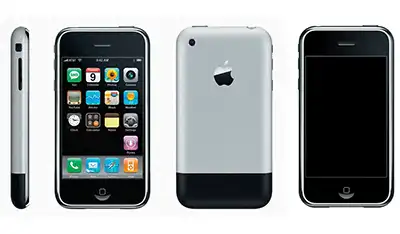
The history of the iPhone highlights its significant impact on the smartphone market. Its launch, characterized by innovation and technological advancements, marked the start of a new era.
In the early 2000s, the mobile phone market was dominated by companies like Nokia, BlackBerry, Motorola, and Sony Ericsson. These mobile phones were primarily designed for making calls, sending texts, and, in some cases, accessing email. The BlackBerry, for instance, gained popularity among executives due to its full physical keyboard and robust support for corporate email.
Apple revolutionized the music industry with the launch of the iPod in 2001 and the iTunes Store in 2003. Steve Jobs recognized that mobile phones were starting to include music functions, posing a threat to the iPod’s market dominance. In response, he decided that Apple should develop its own mobile phone.
iPhone Development (2003-2007)
Project Purple
The development of the first iPhone was a highly secretive project led by Apple under the leadership of Steve Jobs. Drawing on the mobile device experience gained from the iPod, the company initially began exploring the possibility of creating a tablet with a touchscreen. This project eventually evolved into the development of the iPhone.
The Apple team focused on capacitive screens, which were innovative at the time, as most cell phones used physical keyboards and resistive screens. Steve Jobs recognized that the touch technology developed for tablets could also be applied to a phone. In 2005, Apple officially began working on the iPhone project, internally referred to as “Project Purple.” The team was moved to a separate floor of Apple headquarters and worked under strict confidentiality rules. Initially, Apple explored two concepts simultaneously:
- An iPod Phone, designed to keep the iPod’s iconic Click Wheel, would combine the features of a music player with those of a phone.
- A touchscreen iPhone that enables users to interact directly with the device without needing physical buttons.
Jobs quickly abandoned the idea of an iPod Phone and decided to concentrate on developing the touchscreen.
Apple’s engineering team worked diligently to develop an innovative device that was both intuitive and elegant, packed with features. One of the biggest challenges they faced was the touchscreen technology, which was relatively new at the time and required extensive research and development.
Another significant challenge was creating the multi-touch interface. Apple needed to design intuitive gestures, like “pinch-to-zoom,” and ensure that the screen only detected touches from fingers, not from external objects.
The Apple team aimed to combine the iPhone’s numerous features into a single device. They sought innovative solutions to merge the functionalities of a mobile phone, a music player, and an internet browser, ensuring that users could switch between them easily and intuitively.
In order for everything to function properly, Apple required an efficient operating system for mobile devices. Rather than utilizing existing software, the company chose to modify macOS to make it compatible with compact hardware. This decision ultimately led to the development of iOS.
The design of the first iPhone underwent multiple iterations before its final form was decided. Steve Jobs rejected several proposals before settling on a sleek design featuring a large screen and no physical keyboard. The device was crafted with a durable glass screen, unlike many phones of its time that used plastic. It included a single button on the front and a minimalist metal body.
Apple reached out to Taiwanese manufacturer Foxconn to produce the iPhone. The processor was based on ARM technology, and the display was provided by LG. Every aspect of the hardware was carefully planned to ensure a high-quality final product.
To launch the iPhone, Apple needed a carrier partner. In 2005, it entered into a secret agreement with Cingular Wireless (now known as AT&T), granting Cingular exclusive rights to launch the product in the United States. By the time of the iPhone’s launch, Cingular had rebranded itself as AT&T.
The Launch of the iPhone
Macworld Expo (2007)
On January 9, 2007, Steve Jobs took the stage at the Macworld Expo and made one of the most iconic announcements in technology history. He began his presentation by saying:
“Today we’re introducing three revolutionary products. The first one is a
widescreen iPod with touch controls. The second is a revolutionary mobile phone.
And the third is a breakthrough Internet communications device.”
He then revealed that the three products were actually one: the iPhone. The audience erupted in excitement.
The official launch of the US iPhone occurred on June 29, 2007. It was priced at $499 for the 4GB model and $599 for the 8GB model, and was available exclusively to AT&T customers. People lined up in large numbers to purchase it. Despite its high price and some limitations, it quickly became a success.
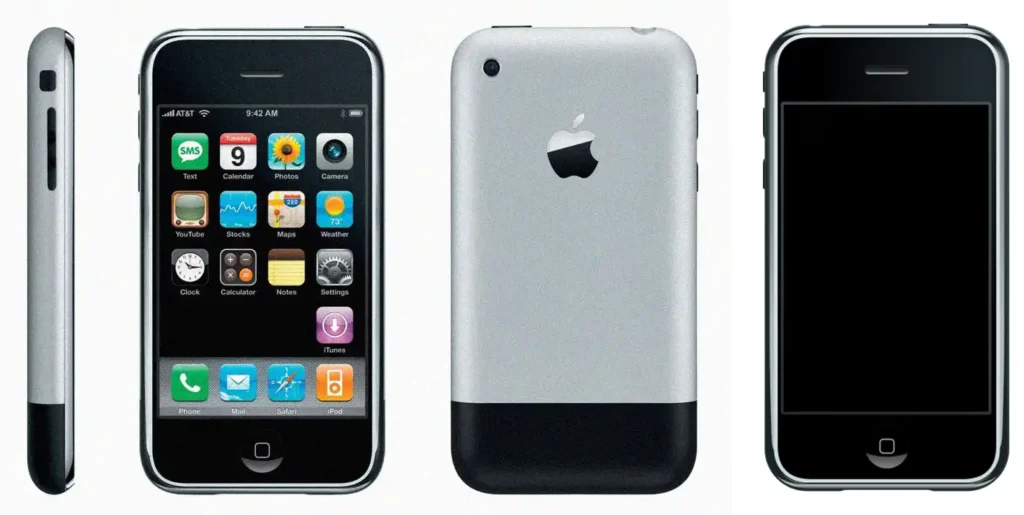
Main Features of the First iPhone:
Touchscreen: The first iPhone introduced a 3.5-inch touchscreen, which was revolutionary at its launch. Unlike most mobile phones at the time that relied on physical keyboards or smaller, less responsive screens, the iPhone’s touchscreen enabled users to interact with the device through gestures such as tapping, dragging, and pinching.
Intuitive Interface: The operating system, known as iPhoneOS, was designed to be intuitive and user-friendly. The app icons were large and clearly defined, allowing for smooth and responsive navigation between different screens.
Sleek Design: The iPhone featured a sleek, minimalist design, constructed with an aluminum body and minimal physical buttons. Its compact size made it easy to carry, fitting comfortably in a pocket.
2-Megapixel Camera: Equipped with a 2-megapixel camera, the first iPhone allowed users to take reasonably good quality photos for the time. Although it wasn’t the best camera available, it was sufficient for capturing everyday moments.
Connectivity: The first iPhone supported Wi-Fi and Bluetooth connectivity, enabling users to browse the internet and share files with other devices. However, it was not compatible with 3G networks, which limited connection speeds in areas with only 2G coverage.
Battery Life: The battery of the first iPhone could last up to 8 hours of talk time and 250 hours on standby. While it wasn’t the best battery on the market, it was adequate for a day’s moderate use.
Applications: At launch, the first iPhone did not have an application store like the App Store. Users could only access the pre-installed applications, which included the Safari web browser, email application, and iPod music player.
In summary, the first iPhone was an innovative device that introduced several features that have since become standard in today’s smartphones. Despite its limitations, it was a significant milestone in mobile telephony and paved the way for the smartphone revolution.
Evolution and market dominance (2008-2010)
2008 – iPhone 3G – App Store

In 2008, Apple released the iPhone 3G, introducing several improvements over its predecessor. This model featured a faster 3G connection, integrated GPS, and a plastic back that enhanced signal strength compared to the previous metal design. Additionally, it launched the App Store, allowing users to download third-party applications, both paid and free. The App Store was a transformative feature, making the iPhone a comprehensive platform for apps.
2009 -iPhone 3GS – Better performance
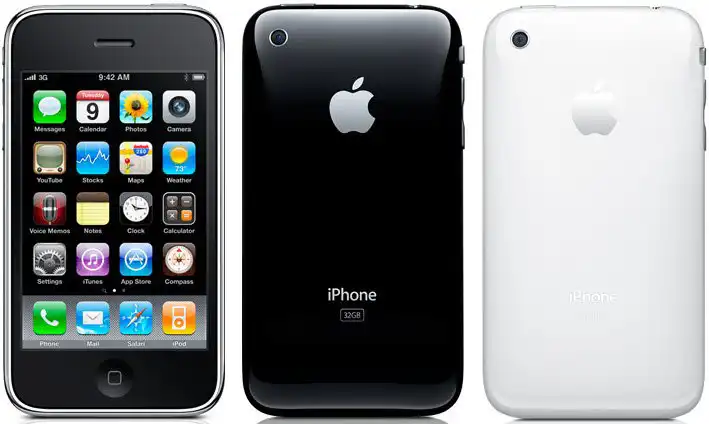
The iPhone 3GS featured a faster processor and a 3.2MP camera that included video recording capabilities. Its screen was improved with greater sharpness and contrast, resulting in more vibrant colors and better visibility in outdoor settings. Additionally, the iPhone 3GS introduced new features such as a compass for more precise navigation applications and voice control for executing simple tasks using voice commands. Its popularity continued to rise, leading to steadily increasing sales.
Retina Display and the iPhone 4 Controversy
2010 – iPhone 4 – One of the most iconic
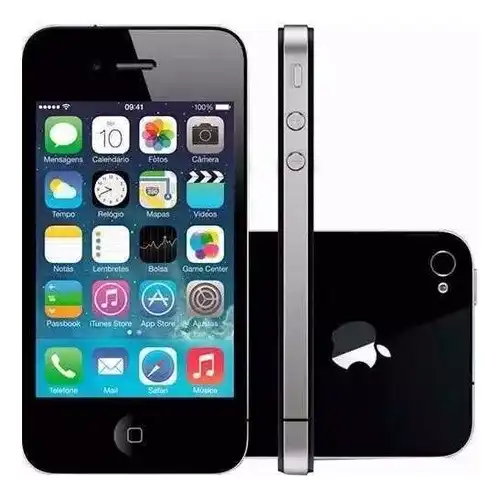
The iPhone 4 was launched in 2010, featuring a new design made of steel and glass. It boasted a 960×640 pixel Retina display, a front-facing camera for FaceTime, and a 5MP rear camera with an LED flash.
The Retina display represented a significant advancement in technology, featuring a high pixel density that results in a high number of pixels per inch (PPI). This means that, when viewed from a normal distance, the human eye cannot distinguish individual pixels, leading to much sharper and more detailed images. As a result, text, images, and graphics appear clearer, which is especially important for reading small text or viewing photos and videos in greater detail. Additionally, the display offers improved brightness and contrast, making it easier to use the screen outdoors or in bright environments.
The launch of FaceTime was a significant breakthrough, as it enabled Apple users to make video or audio calls to one another using the internet over Wi-Fi or mobile data. FaceTime is available on devices such as the iPhone, iPad, iPod touch, and Mac.
The sleek steel frame design of the iPhone 4 presented a significant issue. The receiving antennas were incorporated within the stainless steel frame. When users held the device in a way that allowed two sections of the frame to touch, the conductivity of their hands created a short circuit, leading to a substantial decrease in signal reception.
Many users reported experiencing dropped calls and lost signals, leading the media and consumers to nickname the issue “Antennagate.” Initially, Apple downplayed the problem, suggesting that users simply needed to hold their phones differently. However, due to mounting public pressure, the company held a press conference in 2010 to address the issue. During this conference, Apple acknowledged the problem and offered free rubber cases to all iPhone 4 users. Additionally, the company provided the option for dissatisfied customers to return their devices for a full refund.
Despite its issues, the iPhone 4 was a commercial success and is still celebrated today for its groundbreaking design, regarded as one of the company’s most iconic products.
Steve Jobs’ Legacy and the Future of the iPhone (2011-2014)
2011 – The iPhone 4S and the passing of Steve Jobs
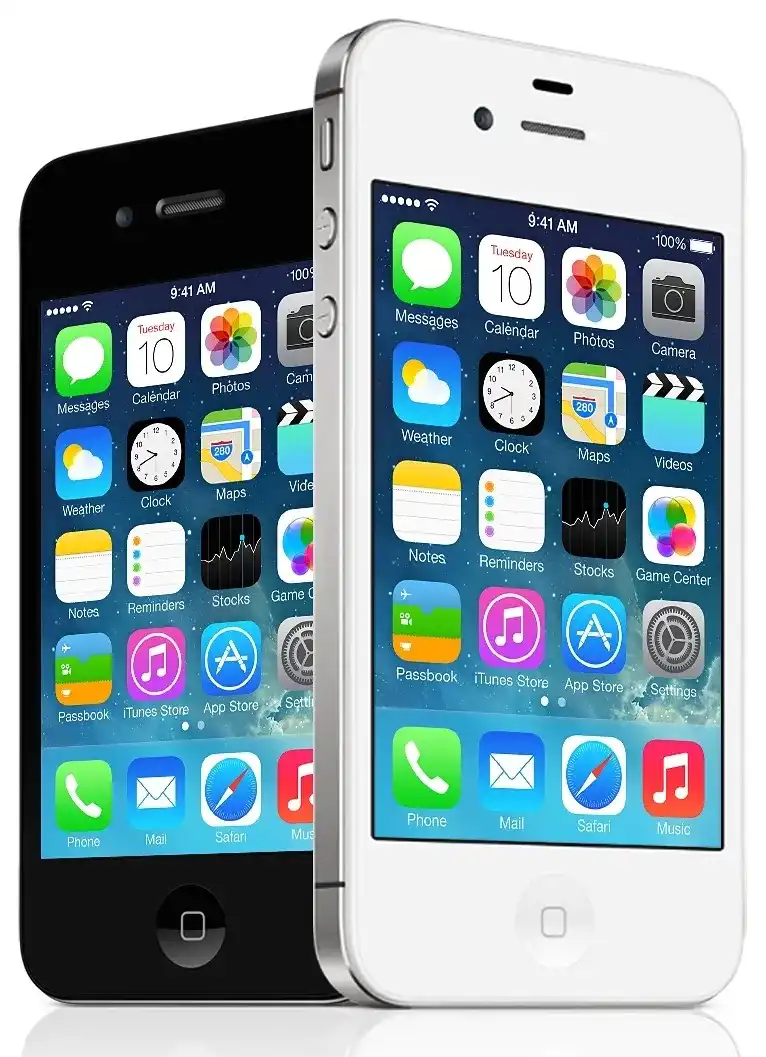
On October 4, 2011, the iPhone 4S was announced during a launch event hosted by Tim Cook, who had taken over as CEO of the company just two months earlier. This new device was an evolution of the iPhone 4 and came equipped with an A5 chip, the same one used in the iPad 2, which provided twice the performance of its predecessor. Additionally, it featured an 8 MP camera with an improved lens and the capability to record videos in 1080p Full HD.
The main highlight of the iPhone 4S was Siri’s introduction, an intelligent voice assistant that enabled users to interact with the device using voice commands, transforming how people used smartphones.
Following the Antennagate controversy with the iPhone 4, Apple revamped the antenna system, enabling the iPhone 4S to automatically switch between two antennas to enhance signal reception.
On October 5, 2011, just one day after the announcement, Steve Jobs passed away due to complications from a rare pancreatic cancer originally diagnosed in 2003.
2012 – iPhone 5 – First larger screen
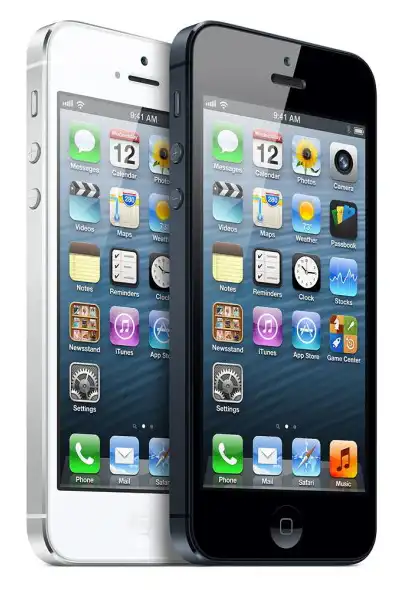
In 2012, the iPhone 5 was released with a 4-inch screen. Its higher resolution of 1136 x 640 pixels allowed for an additional row of apps on the home screen. The device also became thinner and lighter due to its new aluminum and glass design. Equipped with a new A6 chip, it offered improved performance and energy efficiency.
Despite all these modifications, the most significant news was the device’s compatibility with 4G networks, enabling much faster internet browsing compared to 3G networks.
The introduction of the Lightning connector was controversial at the time. It was smaller and reversible, but it made old accessories incompatible without an adapter.
2013 – iPhone 5S
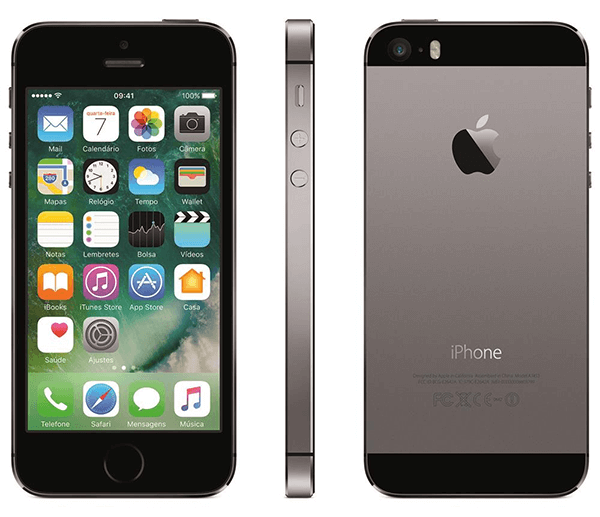
The new line released in 2013 introduced several new features. Apple launched two devices: the iPhone 5S, which maintained the same design as the iPhone 5 but included enhancements to its internal architecture, and the iPhone 5C. This line was the first to come equipped with Touch ID, a fingerprint sensor located in the Home button that enabled quick unlocking and facilitated purchases in the App Store without needing to enter a password.
The iPhone 5S introduced the A7 chip, which features a 64-bit architecture, making it the world’s first smartphone with a 64-bit processor. This advancement significantly enhanced the device’s power and future-proofed it for mobile applications. Additionally, Apple included a co-processor called the M7, which manages motion sensors without straining the main processor.
The 8MP rear camera features a larger sensor that captures more light, along with a True Tone flash comprising dual LEDs — one white and one amber — to ensure better color balance in flash photos.
2013 – iPhone 5C
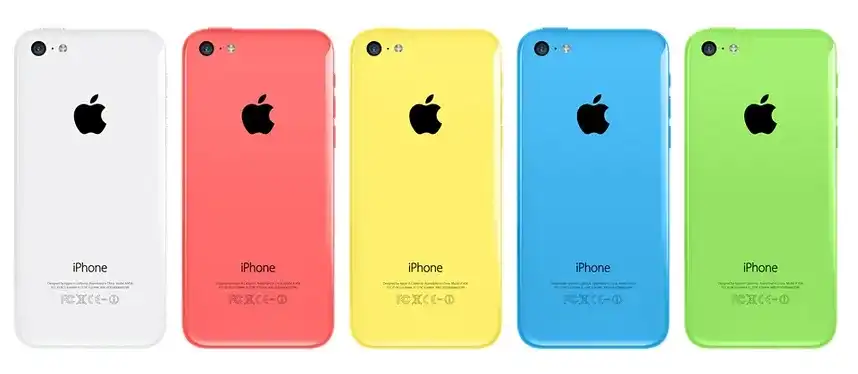
The iPhone 5C was Apple’s attempt to provide a more affordable iPhone without compromising on performance. It replaced the iPhone 5 and featured a plastic casing instead of aluminum. Available in several colors, the device had a glossy polycarbonate exterior with a reinforced internal structure. Its architecture was very similar to that of the iPhone 5, utilizing the same A6 chip, camera, and screen.
Although the iPhone 5C received praise for its design and vibrant colors, its sales did not match those of the iPhone 5S. Many consumers preferred to spend a little extra for the iPhone 5S, which featured Touch ID and greater performance.
As a result, Apple never released another plastic iPhone and, years later, adopted a different strategy for affordable models like the iPhone SE.
The age of big screens (2014-2020)
2014 – iPhone 6, 6 Plus
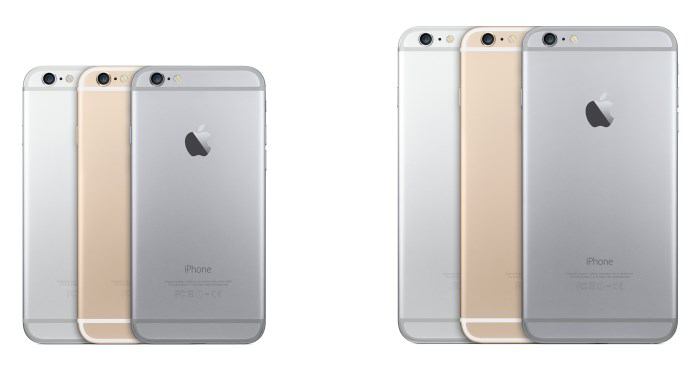
The iPhone 6 and iPhone 6 Plus were announced on September 9, 2014, and became available for release on September 19, 2014. These models represented one of the most significant changes in iPhone history, introducing larger displays, a thinner and more rounded design, as well as advancements in both hardware and software. The iPhone 6 featured a 4.7-inch display, while the iPhone 6 Plus had a larger 5.5-inch display.
The new A8 chip was faster and more efficient, providing better performance and graphics capabilities than its predecessor. Additionally, the M8 co-processor now had the ability to measure the user’s altitude.
The camera remained at 8 MP but received enhancements such as optical image stabilization (OIS), which allowed for sharper photos in low-light conditions. It could now also record videos in 1080p at 60 frames per second (fps) and in slow motion at 240 fps.
A significant highlight was the introduction of Apple Pay and NFC technology, enabling users to make payments using their cell phones through Apple Pay.
However, Apple faced controversy shortly after the launch. Some users reported that the iPhone 6 Plus could bend under too much pressure, especially when placed in a pants pocket. This issue became known as “Bendgate” and received considerable media attention.
Apple asserted that these incidents were isolated, but over time, more users began to experience problems with the touchscreen, referred to as “Touch Disease,” which was linked to the device’s structural fragility. As a result, Apple reinforced the internal design in the subsequent generation, the iPhone 6S.
Despite the controversies, the iPhone 6 was an overwhelming success, breaking several sales records. It sold over 10 million units in the first weekend, a record at the time. The iPhone 6 and 6 Plus became the best-selling iPhones in history, surpassing 220 million units sold.
The design of the iPhone 6 influenced several future generations, and Apple’s decision to increase screen sizes solidified the trend of large smartphones, which dominates the market today.a Apple de aumentar o tamanho das telas consolidou a tendência dos smartphones grandes, que dominam o mercado até hoje.
2015 – iPhone 6S, 6S Plus
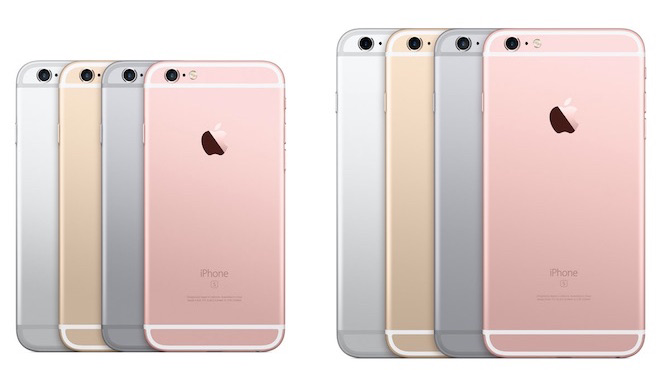
In 2015, Apple announced three new models: the iPhone 6S, iPhone 6S Plus, and iPhone SE. The iPhone 6S and 6S Plus were released on September 9 of that year, while the iPhone SE was released in March 2016.
The iPhone 6S and 6S Plus built upon the design of the iPhone 6, featuring enhancements to their hardware. Both models were powered by the A9 chip, which was 70% faster than its predecessor.
They also included a 12 MP camera that offered improved image quality and 4K video recording. New features such as Live Photos captured moments before and after the photo was taken, and 3D Touch allowed the screen to respond to varying pressure levels for new interactions.
The main difference between the two models was the screen size: the iPhone 6S had a 4.7-inch display, while the iPhone 6S Plus featured a larger 5.5-inch screen. Additionally, the battery life was superior in the 6S Plus.
2016 – iPhone SE (first generation)
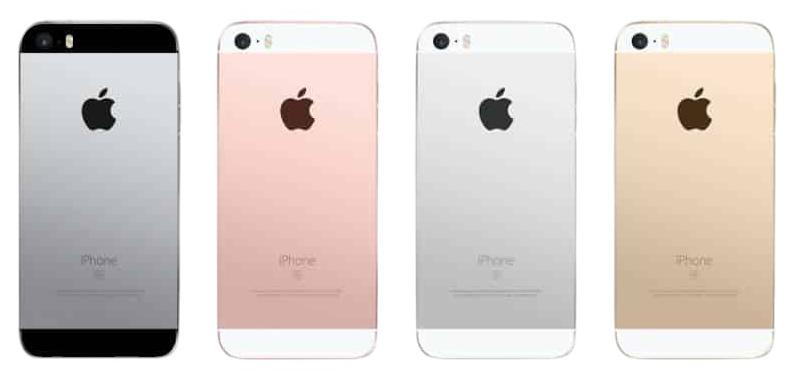
The iPhone SE, released in March, offered a budget-friendly alternative by combining the design of the iPhone 5 with the hardware of the iPhone 6s. It featured a 4-inch screen and was powered by the A9 chip, which is the same as that used in the iPhone 6s line. Additionally, it came with a 12 MP camera capable of recording in 4K resolution.
2016 – iPhone 7, 7 Plus – Farewell to the headphone jack
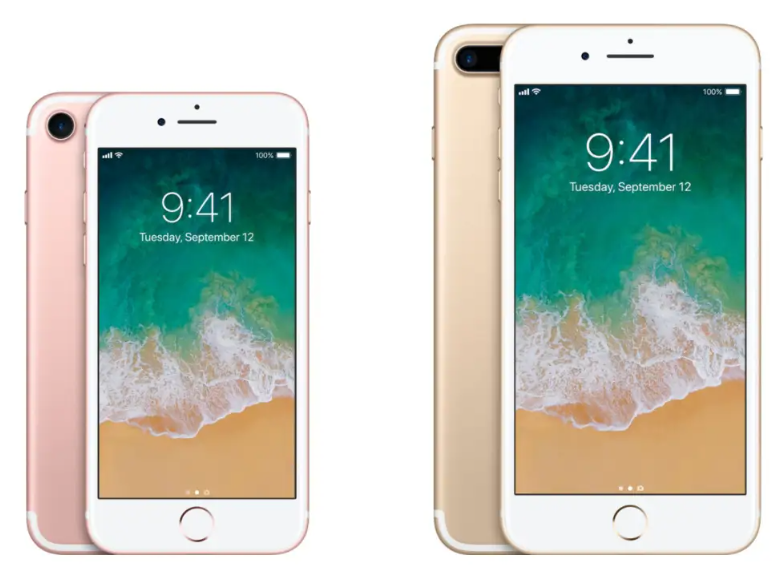
The iPhone 7 and iPhone 7 Plus were announced on September 7, 2016, and released on September 16, 2016. Although they retained a similar design to their predecessors, these models introduced several significant changes. Notably, the 3.5mm headphone jack was removed, the camera received enhancements, and water resistance was added.
Headphones: The removal of the traditional headphone jack required users to rely on either Lightning or Bluetooth headphones, such as the recently launched AirPods. This decision sparked controversy but also led to a significant increase in the adoption of wireless headphones..
Water and dust resistance (IP67): This was the first iPhone to feature IP67 certification, meaning it is resistant to both water and dust. It can be submerged in water for up to 30 minutes at a depth of 1 meter.
Improved cameras: The iPhone 7 introduced a new, faster 12MP camera sensor equipped with optical image stabilization (OIS), a feature that was previously available only on the Plus models. Additionally, the iPhone 7 Plus became the first iPhone to include a dual-camera system, which consists of a 12MP main sensor and a 12MP telephoto lens. This setup enables 2x optical zoom and features such as Portrait mode, which artistically blurs the background of photos.
A10 Fusion Chip: This was Apple’s first quad-core chip, featuring two high-performance CPUs and two energy-efficient CPUs. It offered faster performance compared to the iPhone 6S and improved power efficiency, which enhanced battery life.
2017 – iPhone 8, 8 Plus – Wireless Charging
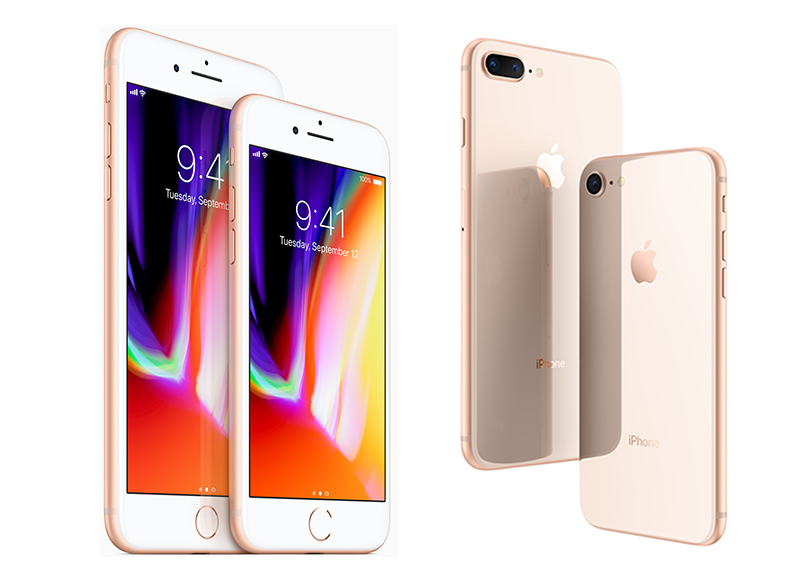
Announced on September 12, 2017, the iPhone 8 and iPhone 8 Plus were released just ten days later. While they did not feature the groundbreaking design of the iPhone X, which was unveiled at the same event, these models introduced significant enhancements in performance, camera capabilities, and wireless charging.
The iPhone 8 replaced its all-aluminum design with a glass back, enabling wireless charging for the first time on an iPhone. Additionally, it introduced fast charging via cable, allowing users to reach 50% battery in just 30 minutes when using an 18W or higher charger (sold separately).
Equipped with the A11 Bionic chip, the iPhone 8 featured six cores and was up to 70% faster than the A10 chip found in the iPhone 7. This advancement improved support for augmented reality (AR) and enhanced power efficiency. Notably, the iPhone 8 was the last model to include a Home button and Touch ID; subsequent models eliminated the button in favor of Face ID.
2017 – iPhone X – The end of the Home button
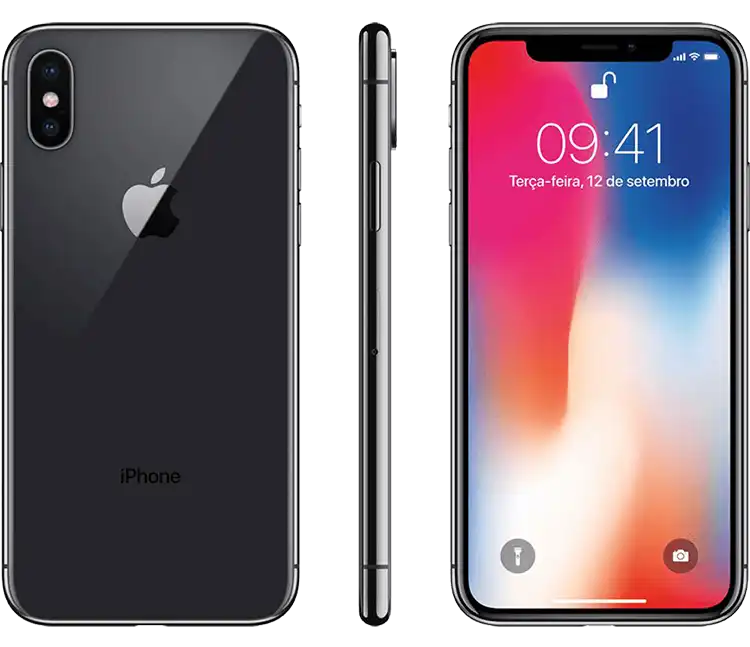
The iPhone X was announced alongside the iPhone 8 and 8 Plus and was released on November 3, 2017. This model marked the 10th anniversary of the iPhone and introduced significant changes to both its design and user interaction. It was the first iPhone to eliminate the Home button, replacing it with Face ID and a borderless OLED screen.
This OLED screen, known as the Super Retina Display, measured 5.8 inches and featured a resolution of 2436 x 1125 pixels. The removal of the Home button resulted in a gesture-based system for navigation. Additionally, the phone had a stainless steel frame and a glass back, which allowed for wireless charging.
Powered by the A11 Bionic chip, the iPhone X included a neural engine to support Face ID and machine learning capabilities. This chip was 70 percent faster than its predecessor, the A10, and its graphics were specifically optimized for augmented reality.
2018 – iPhone XS, XS Max
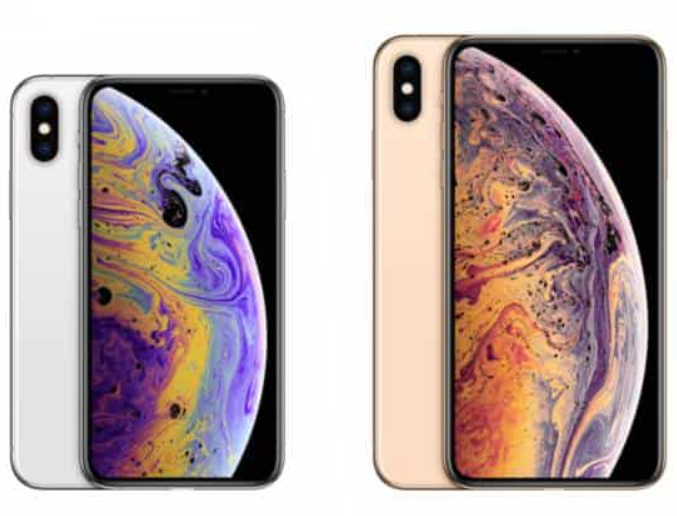
The iPhones XR, XS, and XS Max were announced on September 12, 2018. The XS and XS Max were released just nine days later, while the XR was launched on October 26.
The iPhone XS and XS Max faced criticism for offering only slight improvements over the iPhone X. Despite featuring the new A12 Bionic chip, their performance did not significantly enhance compared to their predecessor. However, they did introduce some new features, including Dual SIM capability with eSIM, which allows the use of two phone lines simultaneously (one physical SIM and one digital eSIM). They also offered greater water resistance with an IP68 rating and more storage options, including up to 512 GB.
The primary difference between the XS and XS Max was their screen size. Both devices were equipped with OLED screens; the XS had a 5.8-inch display, while the XS Max featured a larger 6.5-inch screen.
2018 – iPhone XR
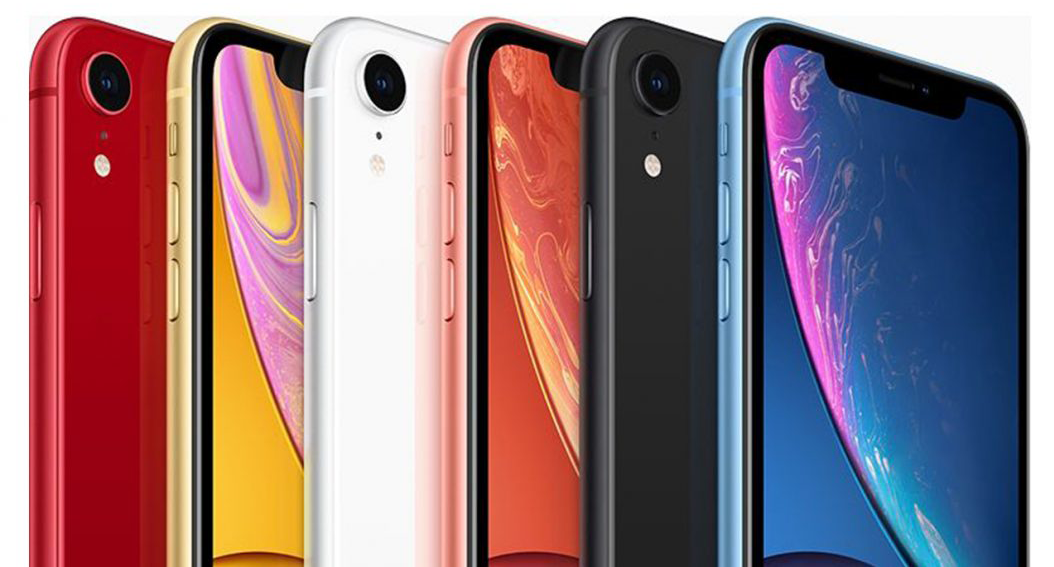
The iPhone XR was designed as a more affordable alternative to the iPhone XS and XS Max, striking a good balance between performance, design, and price. It featured the same chip as the XS line, ensuring strong performance, and had the longest battery life of the three models. The screen was an LCD, measuring 6.1 inches.
Despite being the budget-friendly option, the iPhone XR became a sales success and remained popular for years thanks to its impressive performance and quality cameras.
2019 – iPhone 11, 11 Pro, 11 Pro Max
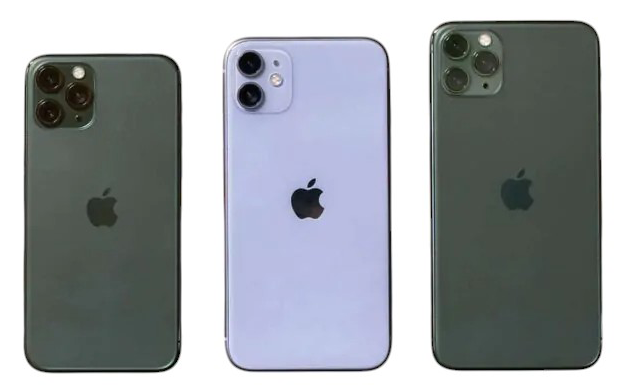
On September 10, 2019, Apple announced the iPhone 11, iPhone 11 Pro, and iPhone 11 Pro Max, which were released ten days later.
The iPhone 11 Pro and iPhone 11 Pro Max represented the premium line for that year. They featured a Super Retina OLED screen, a triple 12 MP camera, improved battery life compared to the iPhone XS line, and a stainless steel structure.
Additionally, they came with an 18W fast charger and were powered by the A13 Bionic chip, which offered 20% better performance than the A12 chip. This increased performance was complemented by greater energy efficiency, helping to reduce battery consumption. The A13 chip also enhanced capabilities related to artificial intelligence and augmented reality. The main difference between the two models was their screen size, with the Pro having a 5.8-inch display and the Pro Max featuring a larger 6.5-inch display.
The iPhone 11, which was the base model of the lineup, became one of the best-selling iPhones in history. It succeeded the iPhone XR and included several improvements, such as a new dual-camera system—introduced for the first time in a more affordable model—along with more power and better battery life. Like the Pro and Pro Max models, it was equipped with the A13 chip for excellent performance. However, its edges were made of aluminum rather than the stainless steel used in the higher-end models.
Despite being the most “basic” model in the lineup, the iPhone 11 achieved remarkable sales success due to its balance of price, performance, and features.
Modern Era (2020-2024)
2020 – iPhone 12, 12 Mini, 12 Pro, 12 Pro Max – 5G
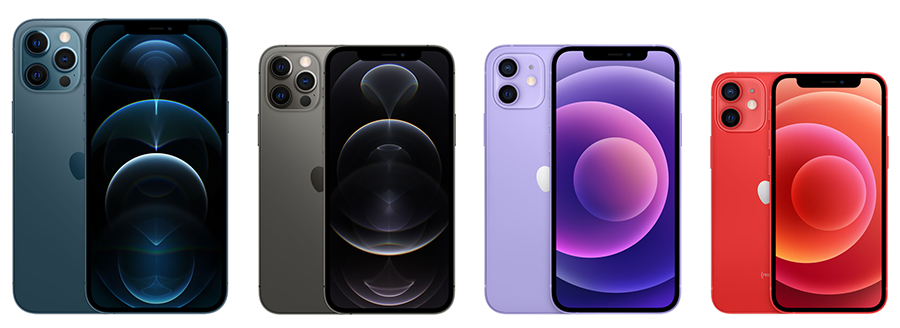
The iPhone 12 lineup was announced on October 13, 2020, and released ten days later. It showcased a new design with straight edges, 5G support, improved displays, and a more powerful processor. This model became one of Apple’s most popular offerings, marking a significant evolution from the iPhone 11.
The structure of the iPhone 12 used aerospace-grade aluminum combined with a glass back. All versions featured an OLED screen, providing enhanced brightness, contrast, and vibrant colors. Additionally, Apple introduced Ceramic Shield, a glass that incorporates ceramic crystals, making it up to four times more resistant to drops compared to the iPhone 11. This was also the first iPhone lineup compatible with 5G networks.
The iPhone 12 lineup was powered by the A14 Bionic chip, Apple’s first 5-nanometer processor. It was 50 percent faster than the A13 chip, making it excellent for gaming and augmented reality experiences.
Both the iPhone 12 and iPhone 12 Mini shared the same hardware; however, the iPhone 12 featured a 6.1-inch screen, while the Mini had a smaller 5.4-inch screen. The Pro models included a triple-camera setup. The regular Pro model had a 6.1-inch display, while the Pro Max boasted a larger 6.7-inch screen.
2020 – iPhone SE (second generation)
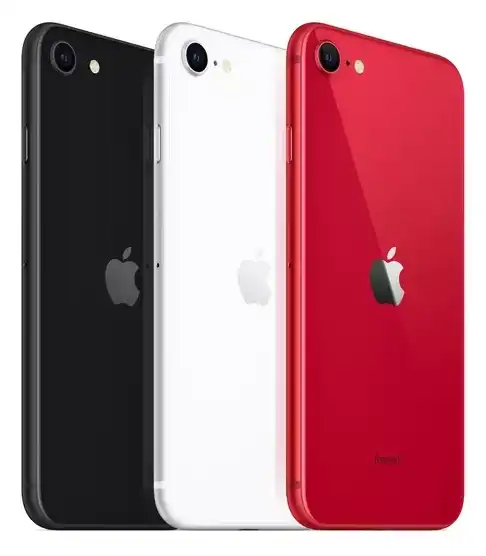
The second-generation iPhone SE featured the design of the iPhone 8, but it was equipped with the powerful A13 Bionic processor, the same one used in the iPhone 11. It had a 4.7-inch display, a 12 MP camera with the capability for 4K recording, a Home button that included Touch ID, and it was rated IP67 for water resistance. This model served as a more affordable option for those seeking a modern device at a lower price.
2021 – iPhone 13, 13 Mini, 13 Pro, 13 Pro Max
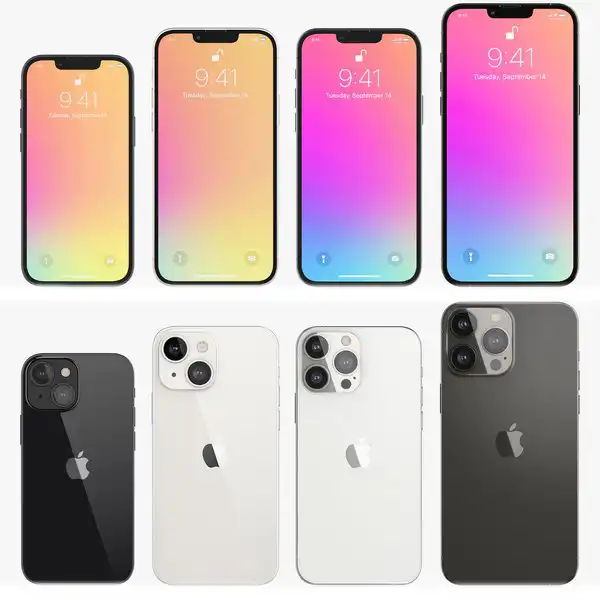
Apple launched the iPhone 13 lineup in 2021, which includes four models: the iPhone 13 mini, iPhone 13, iPhone 13 Pro, and iPhone 13 Pro Max. Each model offers a unique combination of features and screen sizes to cater to different user needs and preferences.
The iPhone 13 lineup features a Super Retina XDR display and is powered by the A15 chip, which provides enhanced performance and efficiency compared to its predecessor. The camera system has also been improved, resulting in better photo and video quality, even in low light conditions. Additionally, the lineup introduces Cinema Mode, allowing users to record videos with a depth effect that automatically shifts focus between subjects. Battery life has also been extended compared to the iPhone 12 series.
The iPhone 13 has a 6.1-inch screen, while the iPhone 13 mini has a smaller 5.4-inch display. Both models are equipped with dual cameras. In contrast, the Pro models have a triple-camera system, with the iPhone 13 Pro featuring a 6.1-inch screen and the iPhone 13 Pro Max boasting a larger 6.7-inch display.
2022 – iPhone 14, 14 Plus, 14 Pro, 14 Pro Max

The iPhone 14 lineup was launched in 2022, featuring two main categories: the iPhone 14 and 14 Plus, as well as the iPhone 14 Pro and 14 Pro Max.
The iPhone 14 and 14 Plus showcased an aluminum frame design with Ceramic Shield protection on the front screen. Both models were equipped with a dual-camera system, a Super Retina XDR display, and utilized the same A15 Bionic chip as the iPhone 13 lineup. The iPhone 14 had a 6.1-inch screen, while the 14 Plus had a larger 6.7-inch display.
On the other hand, the iPhone 14 Pro and 14 Pro Max featured a stainless steel frame design, also with Ceramic Shield on the front. These models came with a triple-camera system and a Super Retina XDR display that included ProMotion technology, enabling an adaptive refresh rate of up to 120Hz for a smoother user experience. They were powered by the A16 Bionic chip, which is the successor to the A15. The Pro and Pro Max models also had screen sizes of 6.1 inches and 6.7 inches, respectively.
A significant new feature introduced in the Pro lineup was Dynamic Island. This innovation transformed the area at the top of the screen, where the front camera and sensors are located, into a space for notifications, alerts, and real-time activities such as phone calls, music playback, and navigation information. Dynamic Island is also interactive, allowing users to control applications and perform actions directly from the lock screen or home screen.
2022 – iPhone SE (third generation)
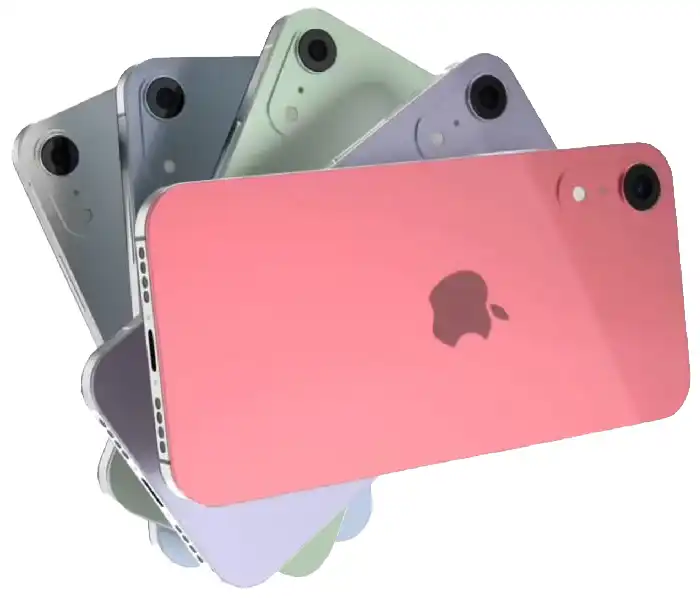
Apple has once again introduced a more affordable option for those seeking a budget-friendly iPhone with updated hardware. The 3rd generation iPhone SE, released in 2022, retains the classic design of the iPhone 8, featuring a Home button with Touch ID. However, it is powered by the A15 chip found in the iPhone 13.
2023 – iPhone 15, 15 Plus, 15 Pro, 15 Pro Max – USB-C
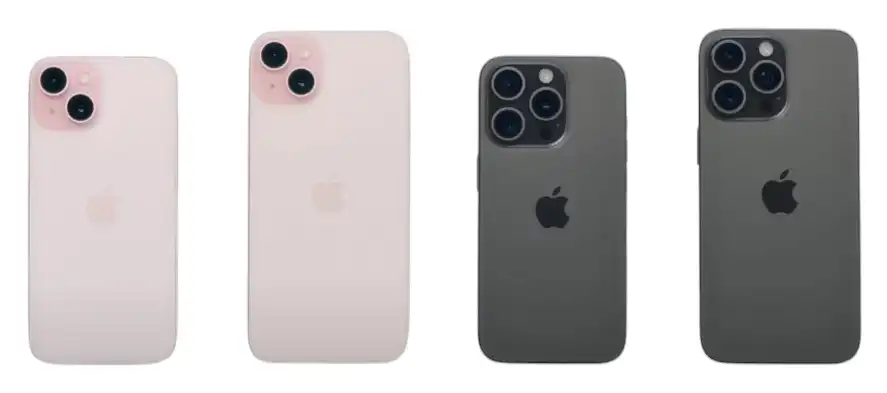
The new iPhone line, launched in 2023, introduced a significant change by replacing the Lightning connector with a USB-C connector.
The iPhone 15 and 15 Plus featured an aluminum frame design and a Ceramic Shield front screen. Both models came with a dual camera system, a Super Retina XDR display, and were powered by the same A16 Bionic chip as the iPhone 14 Pro line.
They were available in 6.1-inch and 6.7-inch screen sizes, respectively. Notably, the basic models also included the Dynamic Island feature, which had previously been exclusive to the Pro line.
The iPhone 15 Pro and 15 Pro Max showcased a titanium frame design for the first time, with a Ceramic Shield front screen as well. These models were equipped with a triple camera system, offering advanced features such as Cinema mode for video recording with a cinematic depth of field effect, and Apple ProRAW for capturing photos in RAW format to facilitate professional editing. They also utilized the Super Retina XDR display with ProMotion technology and came in 6.1-inch and 6.7-inch sizes.
The Pro line featured the A17 Bionic chip, which provided approximately a 20% performance improvement over the A16. While the A17 chip enhances both CPU and GPU performance, the difference may not be noticeable to all users during everyday tasks such as web browsing, social media use, and messaging.
2024 – iPhone 16, 16 Plus, 16 Pro, 16 Pro Max
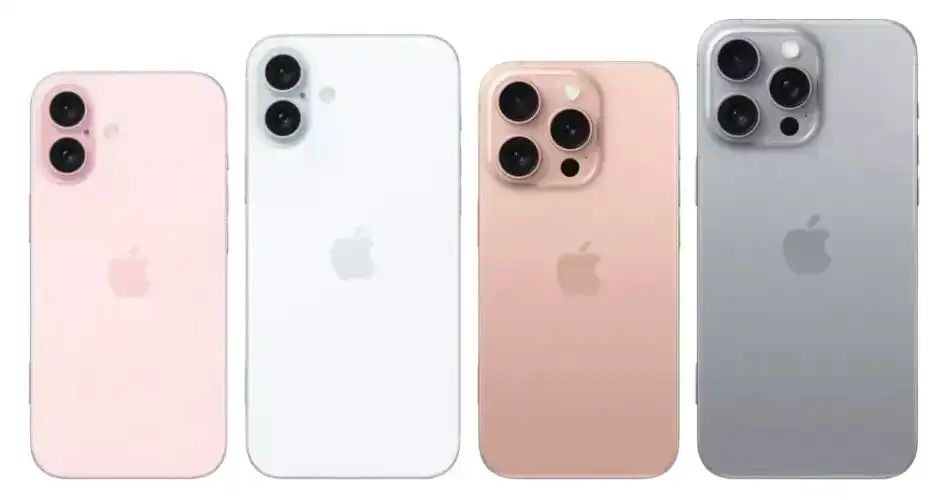
The iPhone 16 line was launched in 2024, making it the most current iPhone lineup as of February 2025.
The iPhone 16 and 16 Plus feature an aluminum frame design and a Ceramic Shield front screen. Both models are equipped with a dual-camera system, a Super Retina XDR display, and utilize the A18 Bionic chip. Notably, the basic models now share the same processor as the Pro line. The iPhone 16 has a 6.1-inch screen, while the iPhone 16 Plus has a 6.7-inch screen.
The iPhone 16 Pro and 16 Pro Max come with a titanium frame and a Ceramic Shield front screen. Both models include a triple-camera system and possess the same Pro camera setup found in the iPhone 15 Pro. They feature Super Retina XDR displays with ProMotion technology, with screen sizes of 6.1 inches and 6.7 inches, respectively.
The new A18 chip, included across the entire iPhone 16 lineup, offers a CPU performance boost of approximately 20% compared to the A17 predecessor. Additionally, the GPU has seen significant improvements, providing gains of up to 30%.
Conclusion: The impact of the iPhone
Since its launch in 2007, the iPhone has become a symbol of innovation and excellence in the world of smartphones. More than just a phone, it has transformed the way we communicate, work, play, and interact with the world around us.
The iPhone’s impact on the smartphone market is undeniable. It ushered in a new era, driving the convergence of various technologies and functionalities into a single device. Its touchscreen interface, intuitive design, and the App Store revolutionized the user experience, paving the way for an ecosystem of applications that have changed the way we live.
The iPhone is much more than a smartphone; it is a symbol of innovation, a catalyst for change, and an object of desire. Its influence on the smartphone market is unmistakable, and its legacy will continue to shape technology and culture for years to come.

